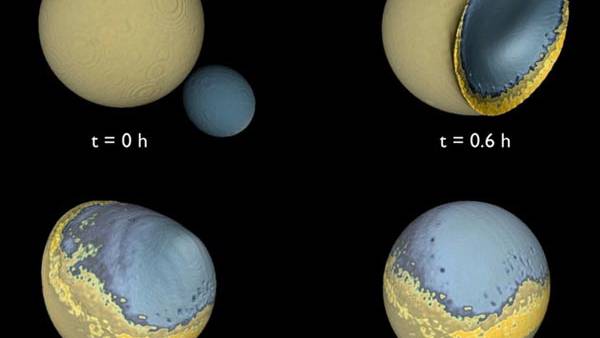New Theory "The Big Splat": Earth Had Two Moons?
Source: time.com
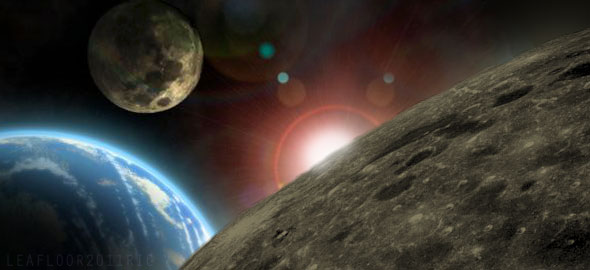
Earth must have felt pretty inadequate a week or two ago when astronomers announced that distant Pluto has yet another moon. Pluto! Recently demoted to a dwarf planet! And yet it boosted its satellite total to four, while we remain forever stuck at one. True, Earth is ahead of Mercury and Venus, which have no moons at all. But Mars, which is significantly smaller than Earth, has two; and don’t even mention Jupiter, with more than 60; or Saturn, with 53. Even asteroids have multiple moons — including Sylvia, a 384-mile (617 km) space rock that boasts the twin satellites Romulus and Remus.
But Earth’s rep may might gotten a bump, thanks to a paper just published in the journal Nature. Our home planet may have just one lonely moon now, but long ago, like Mars and Sylvia, we had two. "Whether it’s right or not, I don’t know," says Maria Zuber, a planetary scientist at MIT who wrote an opinion piece accompanying the new study. "But I think it’s very plausible."
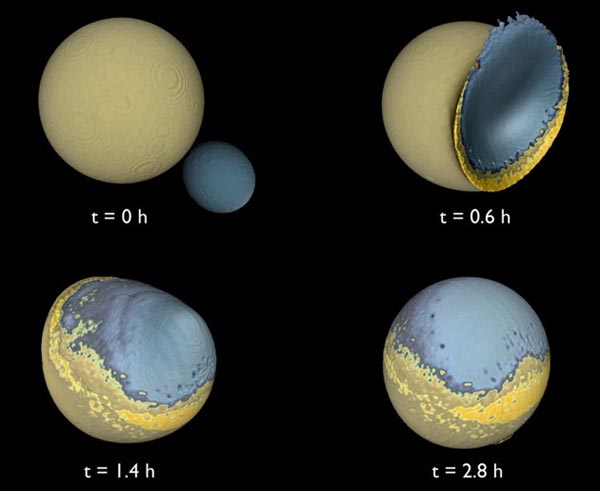
This diagram provided by Martin Jutzi and Erik Asphaug, University of California, Santa Cruz via Nature shows a simulation of four stages of a collision between the Moon and a companion moon, four percent of the lunar mass, about 4 billion years ago. Earth once had a second moon, until it made the fatal mistake of smacking its big sister, some astronomers now theorize. For awhile when the Earth was young, it had a big moon, the one you see now, and a smaller "companion moon" orbiting above. Then one day that smaller moon collided into the bigger one in what astronomers are calling the "big splat." (AP Photo/Martin Jutzi and Erik Asphaug, University of California, Santa Cruz via Nature)
The idea, cooked up by astronomers Martin Jutzi and Erik Asphaug, of the University of California at Santa Cruz, started out as an attempt to explain why our moon has so asymmetrical a surface. The part that faces us is relatively smooth, with vast expanses of ancient lava forming flat, dark, low-lying plains that earlier astronomers mistook for oceans. But when space probes first circled the moon in the early 1960s, scientists learned that the far side is mostly covered with rugged mountains and craters.
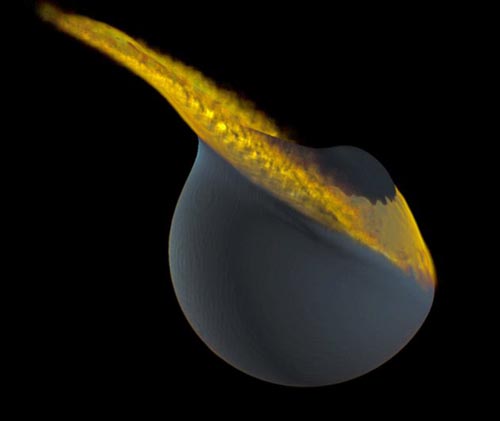
This artist’s rendering provided by Martin Jutzi and Erik Asphaug, University of California, Santa Cruz via Nature shows a simulation of a collision between the Moon and a companion moon, four percent of the lunar mass, about 4 billion years ago. Earth once had a second moon, until it made the fatal mistake of smacking its big sister, some astronomers now theorize. For awhile when the Earth was young, it had a big moon, the one you see now, and a smaller "companion moon" orbiting above. Then one day that smaller moon collided into the bigger one in what astronomers are calling the "big splat." (AP Photo/Martin Jutzi and Erik Asphaug, University of California, Santa Cruz via Nature)
Nobody has ever been able to explain with certainty why the moon should be so lopsided: maybe it had to do with some kind of massive impact that violently rearranged the surface, much like what happened to the asteroid Vesta. Maybe it was a slightly off-center core that caused the crust to be thinner on the Earth-facing half of the moon, which made that hemisphere more susceptible to lava bleeds.
But then Jutzi and Asphaug began thinking. "It looked to us a little bit as though the highlands on the far side accreted" — which is to say, they were added on top of the pre-existing surface. The astronomers thought a bit more, and realized that this idea was consistent with scientists’ beliefs about how the moon formed in the first place. Thanks to the analysis of moon rocks that were brought back by the Apollo missions, planetary scientists are pretty sure that our satellite was born billions of years ago when a Mars-size planetoid smashed into the young Earth.
The impact blasted off a cloud of debris from both of the objects and sent it spinning into space, where it eventually congealed into the moon. There could have been other, smaller pieces as well, says Zuber, but their orbits would have been unstable, causing them either to be flung away or to fall into Earth or the moon pretty much immediately.
Except, that is, if they happened to end up at a Trojan point — a place in the same orbit as the moon, but either well ahead of or well behind it, that’s gravitationally stable — or relatively so anyway. Just last week, astronomers announced the discovery of a Trojan asteroid leading the planet Earth around the sun. There’s no reason a Trojan moon couldn’t lead or follow our moon around the Earth.
Read the full article at: time.com
Trojan Asteroid: Like a poodle on a leash, tiny asteroid runs ahead of Earth in orbit of sun
By Malcolm Ritter | YahooNews.ca / AP
Like a poodle on a leash, a tiny asteroid runs ahead of Earth on the planet’s yearlong strolls around the sun, scientists report.
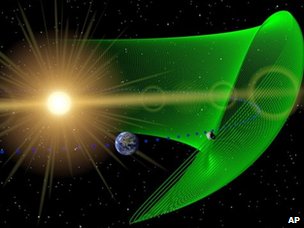 The discovery of this companion, which measures only about 300 metres across, makes Earth the fourth planet in the solar system that’s known to share its orbit with an asteroid.
The discovery of this companion, which measures only about 300 metres across, makes Earth the fourth planet in the solar system that’s known to share its orbit with an asteroid.Imagine Earth and the asteroid travelling around a clock face, with the sun in the middle. Generally, the asteroid runs about two numbers ahead.
However, the asteroid sometimes ranges so far ahead that it’s on the opposite side of the sun from Earth, said Martin Connors of Canada’s Athabasca University in Alberta. He reports the work with colleagues in Thursday’s issue of the journal Nature.
Asteroids are giant space rocks that orbit the sun, and ones that share an orbit with a planet are called Trojans. Scientists had previously found a few for Mars and Neptune and nearly 5,000 for Jupiter. Spotting one in Earth’s orbit is difficult from the ground because the potential locations are generally in the daytime sky.
The newfound object, called 2010 TK7, was discovered last year by NASA’s WISE satellite. Connors and colleagues were able to focus a ground-based telescope in Hawaii on it in April, determining its orbit with enough precision to show it was a Trojan.
Donald K. Yeomans, manager of NASA’s Near-Earth Object Program Office, who didn’t participate in the discovery, agreed that the asteroid is a Trojan. Most scientists suspected Earth had them, he said, and "I would guess there’s others."
Video from: YouTube.com
Video from: YouTube.com
Also tune into:
David Icke - The Cosmic Firewall & The Moon Matrix
David Icke - The Moon and Saturn Matrix
Richard C. Hoagland - Phobos an Ancient Alien Spaceship, Mars, NASA & Disclosure
Mike Bara - Dark Mission, The Occult NASA Moon Mission
Wallace Thornhill - The Electric Universe
Wallace Thornhill - Proto-Saturn, The Purple Dawn of Creation & Our Strange Solar System
Alan Watt - Moon Landing, UFO’s & Fake Alien Threat
Ted Twietmeyer - The Moon & Sun, Time & UFO’s
Richard C. Hoagland - Comet Elenin as a Time Capsule, Norway Attack & The Messengers of Horus
Andy Lloyd - Comet Elenin, Nibiru & Planet X
